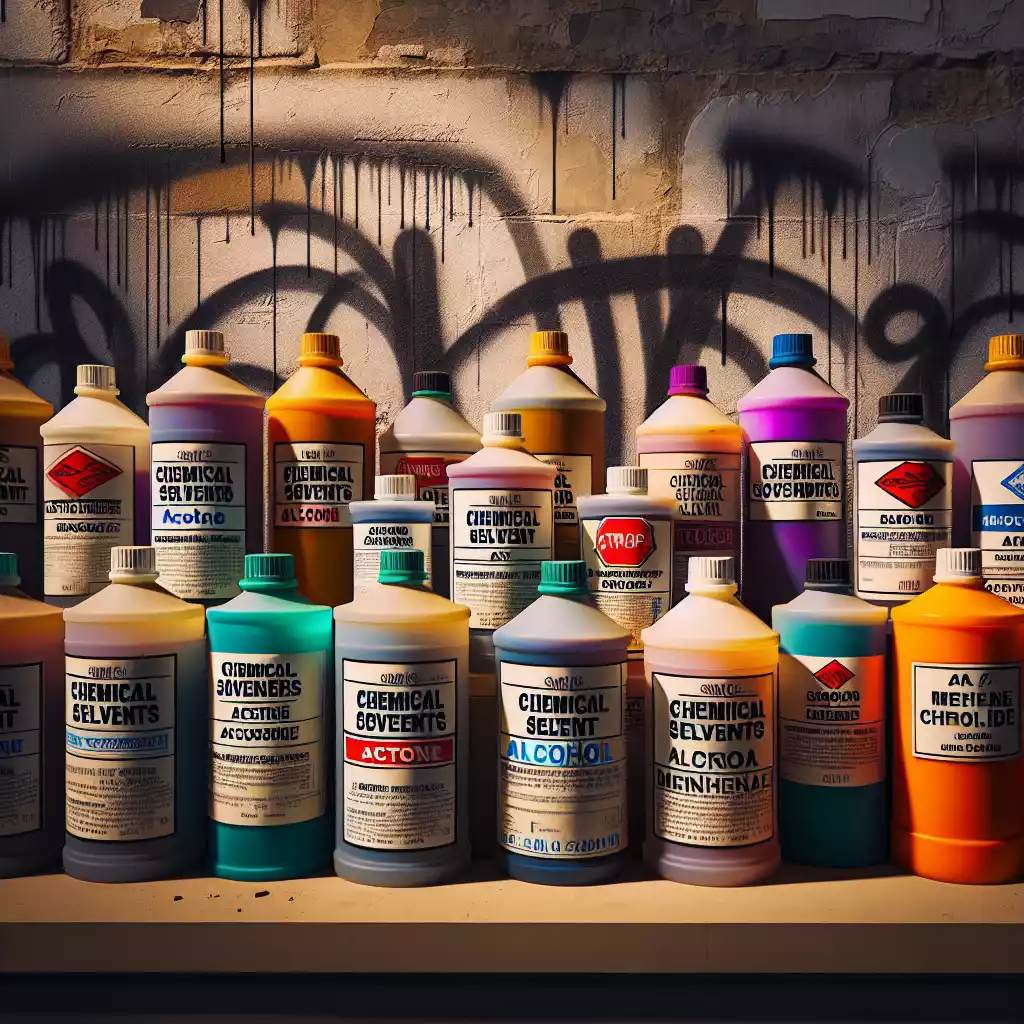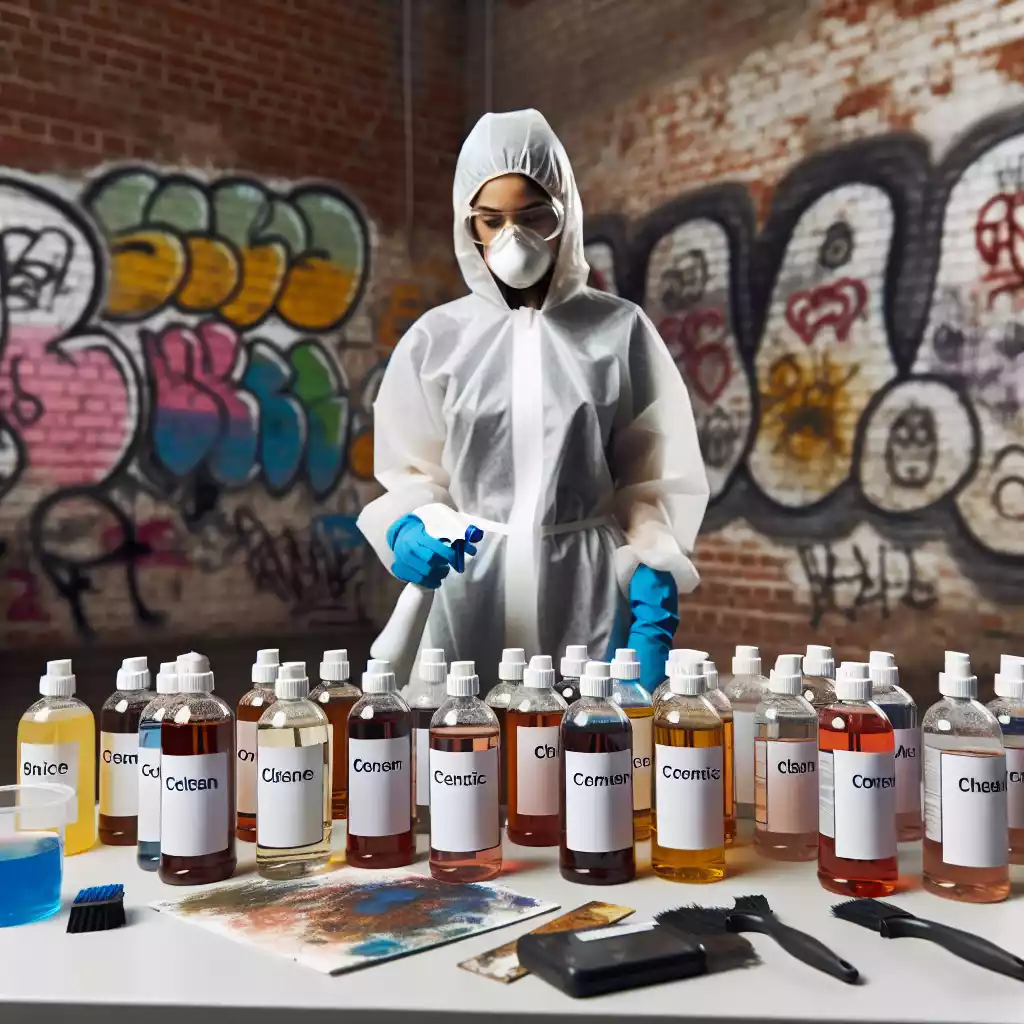Graffiti can be a double-edged sword. While some see it as an art form, for many property owners, it’s an unsightly nuisance. Over the years, I’ve learned that removing graffiti effectively requires more than just elbow grease. Chemical solvents play a crucial role in breaking down the stubborn paints and inks that taggers use. My experience in property maintenance has taught me the importance of selecting the right solvent for the job. Let’s delve into the world of chemical solvents and explore their effectiveness in graffiti cleanup.
Understanding Graffiti and Its Impact
Graffiti, in its many forms, can mar the appearance of buildings, vehicles, and public spaces. Beyond the aesthetic damage, it can also decrease property values and contribute to a sense of neglect. Knowing the nature of graffiti helps in choosing the right solvent for its removal.
The Nature of Graffiti
Common Types of Graffiti
Graffiti comes in various forms, each requiring a different approach for removal.
– Spray Paint: The most common form of graffiti, often requiring strong solvents.
– Marker Ink: Permanent markers leave stubborn stains that penetrate surfaces.
– Stencils and Stickers: These can leave behind adhesive residues that need special treatment.
Why Chemical Solvents are Essential
Chemical solvents break down the molecular structure of paints and inks, making them easier to remove. They penetrate deep into the surface, ensuring a thorough clean. Without solvents, graffiti removal would be significantly more labor-intensive and less effective.
Key Considerations Before Choosing a Solvent

Selecting the right solvent depends on several factors. Here’s what you need to consider:
Surface Type
Different surfaces react differently to solvents. Understanding the surface type helps in choosing a solvent that won’t cause damage.
Brick and Concrete
These porous surfaces often require stronger solvents to penetrate and remove graffiti.
Metal and Glass
Non-porous surfaces can be cleaned with milder solvents, reducing the risk of damage.
Wood and Painted Surfaces
These require careful selection of solvents to avoid stripping the paint or damaging the wood.
Environmental Impact

Opt for eco-friendly solvents whenever possible to minimize environmental harm. Biodegradable options are effective and safer for the environment.
Safety Precautions
Always prioritize safety. Use personal protective equipment (PPE) such as gloves, goggles, and masks when handling chemical solvents.
Top Chemical Solvents for Graffiti Removal
Here are some of the most effective solvents for graffiti cleanup:
Solvent-Based Cleaners

These are powerful and effective but require careful handling.
Acetone
Acetone is a strong solvent that works well on many surfaces but can be harsh on plastics and painted surfaces.
Xylene
Xylene is effective for removing tough graffiti but should be used in well-ventilated areas due to its strong fumes.
Methylene Chloride
This is one of the most potent solvents but also one of the most hazardous. Use with extreme caution and appropriate PPE.
Biodegradable Options
Eco-friendly solvents are gaining popularity due to their effectiveness and reduced environmental impact.
Soy-Based Solvents
These solvents are gentle on surfaces and effective in breaking down graffiti.
Citrus-Based Cleaners
Derived from citrus fruits, these cleaners are both effective and pleasant-smelling.
Specialty Products
These are formulated specifically for graffiti removal.
Graffiti Remover Sprays
Convenient and easy to use, these sprays are designed for quick application and removal.
Gel-Based Removers
Gels cling to vertical surfaces, allowing the solvent to work longer on stubborn graffiti.
Step-by-Step Guide to Using Chemical Solvents

Removing graffiti effectively requires a systematic approach. Here’s a step-by-step guide:
Preparation
Gathering Supplies
Ensure you have all necessary supplies, including the chosen solvent, scrubbing brushes, rags, and PPE.
Safety Gear
Wear gloves, goggles, and a mask to protect yourself from harmful fumes and chemicals.
Application Process
Testing on a Small Area
Always test the solvent on a small, inconspicuous area to ensure it doesn’t damage the surface.
Applying the Solvent
Apply the solvent generously to the graffiti-covered area. Allow it to sit for the recommended time.
Scrubbing and Cleaning
Use a brush to scrub the area gently. Wipe away the dissolved graffiti with a clean rag.
Post-Cleanup Procedures
Rinsing the Surface
Rinse the cleaned area thoroughly with water to remove any residual solvent.
Disposal of Waste
Dispose of used rags and solvent containers according to local regulations.
Tips for Effective Graffiti Removal
– Work Quickly: The sooner you tackle graffiti, the easier it is to remove.
– Use the Right Tools: Brushes, scrapers, and rags all play a role in effective removal.
– Protective Measures for Surfaces: Apply a protective coating to surfaces to make future graffiti removal easier.
Common Mistakes to Avoid
– Ignoring Safety Instructions: Always follow safety guidelines to avoid health risks.
– Using Incorrect Solvents: Match the solvent to the surface and type of graffiti for best results.
– Skipping the Test Patch: Always test the solvent on a small area to prevent damage.
Variations and Alternatives
Mechanical Methods
Pressure Washing
Effective for large areas but can damage delicate surfaces.
Sandblasting
Great for tough graffiti but requires professional equipment and expertise.
Combining Methods
Chemical and Mechanical
Use solvents to break down graffiti, followed by mechanical methods for thorough removal.
Heat and Chemical
Heat can soften graffiti, making it easier for solvents to penetrate and remove.
Environmental and Health Considerations
Eco-Friendly Solvents
Opt for biodegradable solvents to minimize environmental impact.
Personal Protective Equipment (PPE)
Always wear appropriate PPE to protect yourself from harmful chemicals.
Safe Disposal Practices
Dispose of solvents and cleaning materials responsibly to avoid environmental contamination.
Case Studies and Success Stories
Urban Cleanup Initiatives
Cities around the world have successfully used chemical solvents to clean up graffiti, improving urban aesthetics.
Community Efforts
Community groups often organize graffiti cleanup events, using eco-friendly solvents to restore public spaces.
Professional Services
Professional graffiti removal services use advanced solvents and techniques for effective cleanup.
Frequently Asked Questions (FAQs)
What is the most effective solvent for spray paint?
Acetone and xylene are highly effective for removing spray paint from various surfaces.
Can biodegradable solvents remove tough graffiti?
Yes, many biodegradable solvents, such as soy-based and citrus-based cleaners, are effective against tough graffiti.
How to protect surfaces from future graffiti?
Applying anti-graffiti coatings can protect surfaces and make future cleanups easier.
Are there any health risks associated with chemical solvents?
Yes, some solvents can be hazardous. Always use PPE and work in well-ventilated areas.
Can mechanical methods be combined with chemical solvents?
Yes, combining chemical solvents with mechanical methods can enhance the effectiveness of graffiti removal.
Conclusion
Removing graffiti can be a daunting task, but with the right chemical solvents and techniques, it becomes manageable. Understanding the nature of graffiti and the surfaces it affects is crucial in selecting the appropriate solvent. Always prioritize safety and environmental considerations. Whether you’re tackling a small tag or a large mural, the right approach will ensure a clean and graffiti-free surface.
For more detailed information on graffiti removal and the best products to use, check out this [Anchor Text](https://www.graffitiremovalinc.com/products).
BEST CHEMICAL TO REMOVE GRAFFITI
Ruth Aquilani is a renowned graffiti artist known for her bold, colorful, and expressive style. She began her career as a street artist in the early 2000s, quickly making a name for herself in the graffiti community with her unique and striking works of art.
